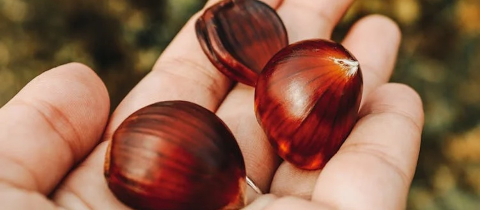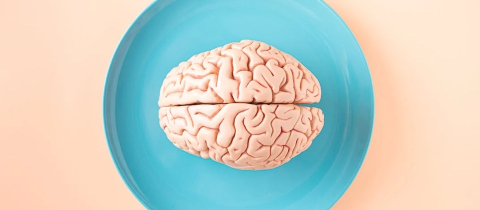We see a great deal of juggling of numbers these days. Various agendas are pushed by manipulating COVID vaccination effectiveness rates, the supposed successes of treatments with hydroxychloroquine or ivermectin and even number of hospitalizations. Sometimes the twisting of numbers is deliberate but sometimes it just the result of a lack of mental dexterity. Could such dexterity be improved by some actual juggling? Let’s take a look.
It would be a hoot to peek into the brains of Chris Bliss, Jason Garfield, Gus Tate, Mark Nizer and Owen Morse. Chances are you’ve never heard of these gentlemen, but they are the biggies of the juggling world. And that is a big world indeed, a world brimming with clubs, competitions, street performers and entertainers who fill large theatres. But now jugglers are showing up in an unusual place: inside a magnetic resonance imager! Neuroscientists have begun to investigate changes in the function and anatomy of the brain brought about by juggling. Juggling obviously improves manual dexterity, but early indications are that it may also improve mental dexterity.
The practice has a rich history. An Egyptian tomb dating back to the seventeenth century B.C. features a wall painting that clearly shows jugglers in action. The unknown prince buried there probably enjoyed jugglers in life and looked forward to being entertained in the afterworld. Curiously, during the Middle Ages, juggling was frowned upon, mostly due to accusations by clerics that such forms of public entertainment led to moral decline. It probably didn’t help that jugglers were often aligned with pickpockets who plied their trade as the audience focused on the jugglers’ feats.
Lustre was restored to juggling in the nineteenth century, thanks mostly to the remarkable talents of the great Paul Cinquevalli. Never had the world seen juggling like this! Newspapers described him as “a wonder incarnate, a perambulating mass of amazement.” And that he must have been. Nobody who saw Cinquevalli perform would ever forget his marvellous juggling with a walking stick, a hat, a cigar and a coin. All four flew around until, simultaneously, the coin dropped on his toe, the hat on his head, the cigar into his mouth, and the stick into his hand. As a finale, the coin catapulted up into the air, to be captured by his right eye, where it rested as if it were an eyeglass.
It was said that the great Cinquevalli’s exploits would never be surpassed. But I’m not so sure. World champion Mark Nizer may have outdone him with his juggling of electric carving knives, bowling balls and flaming propane tanks. Chris Bill, who once opened for Michael Jackson, burst onto the Internet scene with his fantastic video of juggling three balls to music, only to be outdone by Jason Garfield, who used five balls in emulating the performance! And then along came Gus Tate, whose juggling of balls with hands crossed behind his back has to be seen to be believed.
Now, why might an investigation of these performers’ brains prove to be interesting? First, a little background. Back in 2004, researchers at the University of Regensburg in Germany reported that learning to juggle caused certain areas of the brain to grow. Twenty-four volunteers who had never juggled before were divided into two groups. One group learned a basic three-ball routine and practiced every day, while the other group went about their lives normally. After three months, a comparison of MRI scans taken before the study and at its completion showed that the jugglers had increased the grey matter in two areas of the brain involved in visual and motor activity. No change was noted in the control group. Grey matter consists of the bodies of nerve cells, where information processing and computation are carried out.
The practical importance of this study isn’t clear, but it did demonstrate that even in adulthood the brain is not static and that new experiences can result in anatomical changes. Interestingly, though, three months after the jugglers had stopped practicing, their brain shrunk back to its original size. It seems “use it or lose it” really is the name of the game.
To make things even more interesting, a study at the University of Oxford showed that white matter—the part of the brain that is made up of the long fibers that stretch out from the main body of nerve cells and forge connections with other nerve cells—can also be affected by juggling. Once again, a group was asked to learn to juggle and to practice for thirty minutes a day for six weeks. A special technique known as diffusion MRI showed an increase of about 5 per cent in the white matter of the jugglers, and no such increase in the controls. The hypothesis is that the increase in size represents more connections between nerve cells, which again is a measure of brain function.
While this is all intriguing stuff, what it means is still a matter of mystery. Studies need to be devised to explore whether the changes seen in the brains of jugglers translate to anything practical. Has their memory improved? Are they better at computations? And if there is an effect, is it dependent on the skill level that has been achieved? That is, can juggling five balls instead of three make you even smarter? Do you become brilliant if you progress to chainsaws or live cats? Now you see why sticking the juggling superstars’ heads into an MRI imager is an appealing project.
Owen Morse’s scan would be especially interesting. Owen, you see, is a “joggler.” These guys juggle as they run. Most of us have trouble just juggling our schedules. And can Owen ever juggle and run! He holds the world record for covering a hundred meters while juggling five balls. His time: a remarkable 13.8 seconds! Wouldn’t it be neat to see whether he has an unusually well-developed brain? Maybe after this research gets tossed around a little more, we’ll find out that what the world needs to solve the COVID problem is more people juggling balls instead of numbers.







